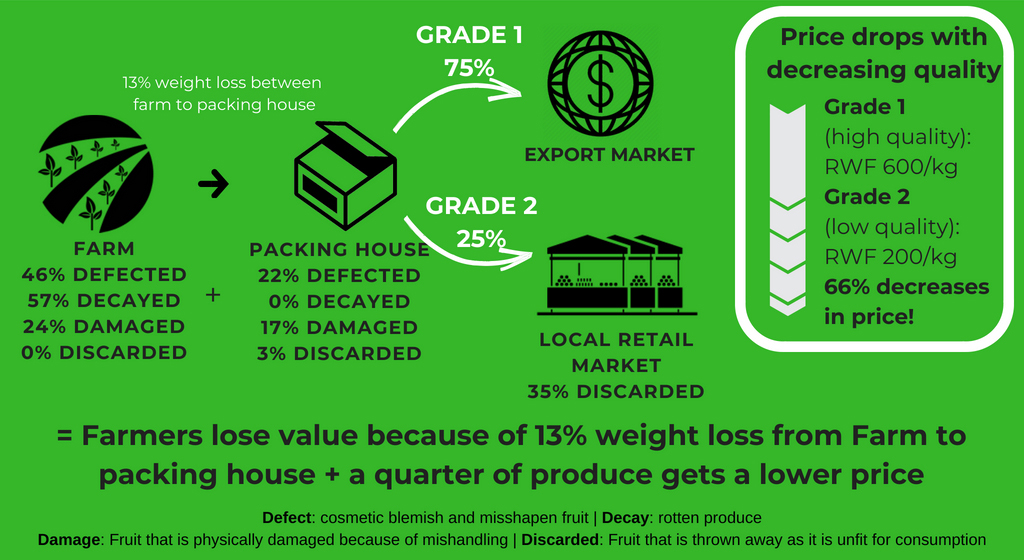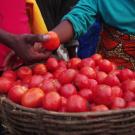This report and policy brief were created by the Horticulture Innovation Lab's project focused on reducing postharvest losses in Rwanda. Through postharvest innovations and interventions, this project works to help farmers and agribusiness enterprises gain better return on investments by adopting appropriate technology and reducing postharvest losses.

Summary of postharvest losses in green chilies
Chilies are a high-value fresh export crop that is currently in its infancy as an industry in Rwanda. The chili investigation focused on the current producers for export and the current exporter, as well as investigating chilies in general and focusing on the barriers to growth for horticulture export “pioneers.”
The main challenge of the current chili fresh export sector is that there is only one buyer/exporter (a classic monopsony) with a non-transparent purchase and postharvest sorting system. A key need for the industry to evolve is to attract other investors into fresh chili exports.
To understand the postharvest losses in the green chilies value chain, the project conducted three types of analysis – Value Chain Analysis, Commodity Systems Assessment Methodology (CSAM) and Environmental Lifecycle Analysis.
Key findings in quality problems and crop losses
Farmer knowledge:
-
Harvesting only once per week causes growers to supply a load of mixed maturities and overall lower grade.
-
Rough handling causes damage and increases the rate of deterioration.
Cold storage:
-
There are no cold chains or cool storage facilities used for green chilies. The one charcoal cool room observed during the study was not in use. Leaving green chilies at ambient temperature for 24 hours after the harvest resulted in 13 percent weight loss.
-
Proper cool storage after harvest at the farm is one of the major limitations. If proper measures are put in place between supply and demand, weight losses could be minimized early in the value chain.
Farmer organization:
-
Growers lack bargaining power for selling their produce to the exporter.
-
There is a lack of transparency regarding grades and sorting/grading standards.
Processing:
-
Lack of processing options, little opportunity to add value.
Postharvest report methodology
To understand the postharvest losses in the green chilies value chain, the project conducted three types of analysis – Value Chain Analysis, Commodity Systems Assessment Methodology (CSAM) and Environmental Lifecycle Analysis.
Postharvest losses were measured using a modified Commodity Systems Assessment Methodology (CSAM). The CSAM is a methodology for describing and evaluating the planning, production, postharvest handling and marketing of agricultural commodities. The modified CSAM includes interviews of stakeholders, observations of handling practices, and direct measurements of quality and quantity losses throughout the value chain.
Also used was a life cycle assessment (LCA). LCA is a standardized procedure used to determine the environmental impacts of products services or goods. Primary data was collected from growers and areas within the postharvest supply chain through interviews and surveys.
A value chain analysis was completed in order to identify constraints. The analysis was completed using interviews with key actors, site visits, and a literature review.

